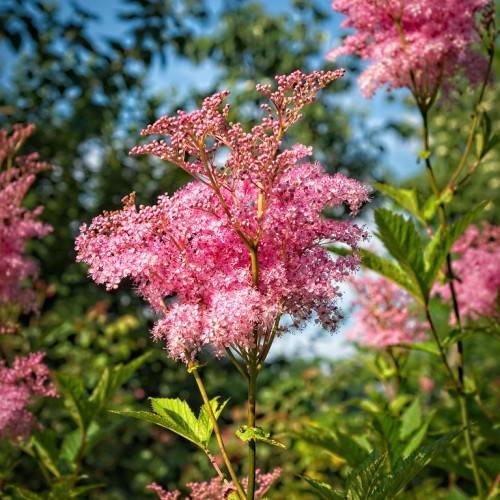
queen of the prairie
Filipendula rubra
Cycle:
Herbaceous Perennial
Watering:
Frequent
Hardiness Zone:
3 - 8
Flowers:
Flowers
Sun:
Full sun,part shade
Leaf:
Yes
Growth Rate:
Low
Maintenance:
Low
Drought Tolerant:
Yes
Salt Tolerant:
Yes
Invasive:
Yes
Care Level:
Medium
watering
Queen of the prairie is an herbaceous perennial that prefers moist soil. However, water only when the top 1-2 inches of soil feels dry to the touch. Be careful not to overwater as this can lead to root rot. During the warmer months, water about once every 7-10 days, making sure the soil is saturated but not waterlogged. During the cooler months, water less frequently, about once every 2 to 3 weeks.
sunlight
Queen of the prairie is a plant species that prefers full or partial sunlight for optimal growth. It should receive 6-8 hours of direct sunlight per day, preferably from mid-morning to early afternoon. Avoid excessive afternoon sun. If grown indoors, try to provide as much natural light as possible. Remember to rotate the pot every few days or weeks to ensure even exposure as the plant is looking for the sun. Place the plant by a south facing window, or using grow lights to supplement natural light.
pruning
Queen of the Prairie should be pruned in the late winter or very early spring before new growth begins. It is best to prune the plant only as much as is necessary to maintain its size and shape; too much pruning can result in loss of blooms. Begin by pruning away any dead or diseased branches. Afterward, selectively remove branches that rub against each other and crossing stems that cause the plant to become misshapen. Also remove any branches that are very weak or spindly. Finally, look to see if any overly dense areas of foliage should be thinned out. Queen of the Prairie generally tolerates more severe pruning than many plants, so pruning can be doneseveral times throughout the growing season if necessary.
